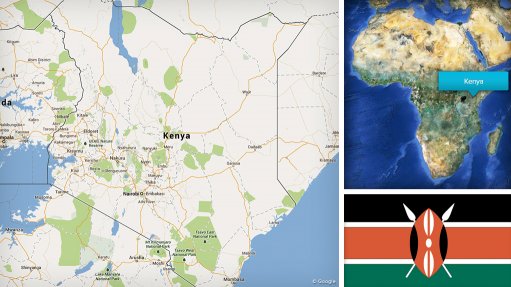South Africa first to test key biodiversity areas
In 2019/20, South Africa became the first mega diverse country to practically test the Key Biodiversity Areas (KBAs) standards across a full range of species groups and ecosystems.
The KBA Standard was developed in 2016 by the global conservation community to identify the most important sites for biodiversity globally.
The global standard for recognising KBAs sets out criteria for the identification of sites contributing significantly to the global persistence of biodiversity, in terrestrial, freshwater and marine ecosystems.
Leading the initiative are 13 of the largest conservation organisations worldwide, including the World Wide Fund for Nature (WWF), the International Union for Conservation of Nature (IUCN), BirdLife International and Conservation International, that came together to develop the KBA Standard.
The KBA Standard and its practical application will be vital at a time when the world, through the international Convention on Biological Diversity (CBD), is deliberating a new plan for nature – the Global Biodiversity Framework 2020-2030.
KBA community Africa representative and BirdLife South Africa regional conservation programme manager Daniel Marnewick says the KBA Standard provides clear global guidance on where conservation efforts should be focused, including for international financial investments, protected area establishment and avoiding further loss of important biodiversity.
South Africa is the first in the world to complete a comprehensive national KBA assessment for all ecosystems and across multiple groups of species, including mammals, birds, plants, fish, amphibians, invertebrates, butterfly, dragonfly, amphibians and reptiles.
Preliminary results from this assessment have identified more than 540 KBAs in South Africa. These KBAs collectively cover about 370 000 km2 of South Africa’s terrestrial and freshwater environments, equivalent to 30% of South Africa’s mainland.
Further, about 173 200 km2 of KBAs are located beyond the mainland owing to the presence of significant seabird colonies.
Marnewick says the fynbos biome in the Western Cape is a good example of where a multitude of sites that meet the global criteria to qualify as KBAs have been identified, as it has so many threatened and endemic species.
“These include species that occur nowhere else in the world,” he notes.
Another KBA is the area containing the last remaining patches of mistbelt grasslands in KwaZulu-Natal. These are key grasslands and form part of South Africa’s Strategic Water Source Areas, as well as holding several threatened species such as the Blue Swallow and Oribi, he notes.
Preliminary results from the identification of KBAs show that 92% of South Africa’s existing protected area network incorporates KBAs, confirming that national parks, nature reserves and other protected areas play an important role in protecting South Africa’s globally significant biodiversity assets.
Marnewick says the large number of sites qualifying as global KBAs highlights South Africa’s biodiversity wealth, using a standardised global currency.
“KBAs will support South Africa’s reporting to the international community on the uniqueness of our biodiversity and its potential to contribute to the country’s development. This network can now complement the existing national spatial biodiversity prioritisation, in which South Africa is a global leader.”
In 2018. BirdLife South Africa and the South African National Biodiversity Institute (Sanbi) partnered to initiate a KBA process in South Africa. The partnerships’ first output was the establishment of a KBA National Coordination Group (NCG), which BirdLife South Africa and Sanbi co-chair.
Other members of the NCG include the Department of Environment, Forestry and Fisheries, WWF-South Africa, the Endangered Wildlife Trust and other species and ecosystems experts and leaders in biodiversity spatial prioritisation.
The NCG commissioned the national KBA assessment which was undertaken by leading biodiversity planners to identify South Africa’s comprehensive network of KBAs.
The final step in the process is for the NCG to invite input from key stakeholders; and then submit the proposed KBA network to the KBA Secretariat in Cambridge, in the UK, for final approval and inclusion on the World Database of Key Biodiversity Areas, aiming for early 2021.
Comments
Press Office
Announcements
What's On
Subscribe to improve your user experience...
Option 1 (equivalent of R125 a month):
Receive a weekly copy of Creamer Media's Engineering News & Mining Weekly magazine
(print copy for those in South Africa and e-magazine for those outside of South Africa)
Receive daily email newsletters
Access to full search results
Access archive of magazine back copies
Access to Projects in Progress
Access to ONE Research Report of your choice in PDF format
Option 2 (equivalent of R375 a month):
All benefits from Option 1
PLUS
Access to Creamer Media's Research Channel Africa for ALL Research Reports, in PDF format, on various industrial and mining sectors
including Electricity; Water; Energy Transition; Hydrogen; Roads, Rail and Ports; Coal; Gold; Platinum; Battery Metals; etc.
Already a subscriber?
Forgotten your password?
Receive weekly copy of Creamer Media's Engineering News & Mining Weekly magazine (print copy for those in South Africa and e-magazine for those outside of South Africa)
➕
Recieve daily email newsletters
➕
Access to full search results
➕
Access archive of magazine back copies
➕
Access to Projects in Progress
➕
Access to ONE Research Report of your choice in PDF format
RESEARCH CHANNEL AFRICA
R4500 (equivalent of R375 a month)
SUBSCRIBEAll benefits from Option 1
➕
Access to Creamer Media's Research Channel Africa for ALL Research Reports on various industrial and mining sectors, in PDF format, including on:
Electricity
➕
Water
➕
Energy Transition
➕
Hydrogen
➕
Roads, Rail and Ports
➕
Coal
➕
Gold
➕
Platinum
➕
Battery Metals
➕
etc.
Receive all benefits from Option 1 or Option 2 delivered to numerous people at your company
➕
Multiple User names and Passwords for simultaneous log-ins
➕
Intranet integration access to all in your organisation

















